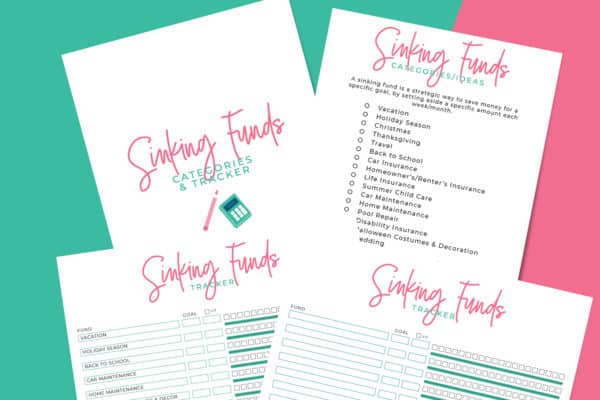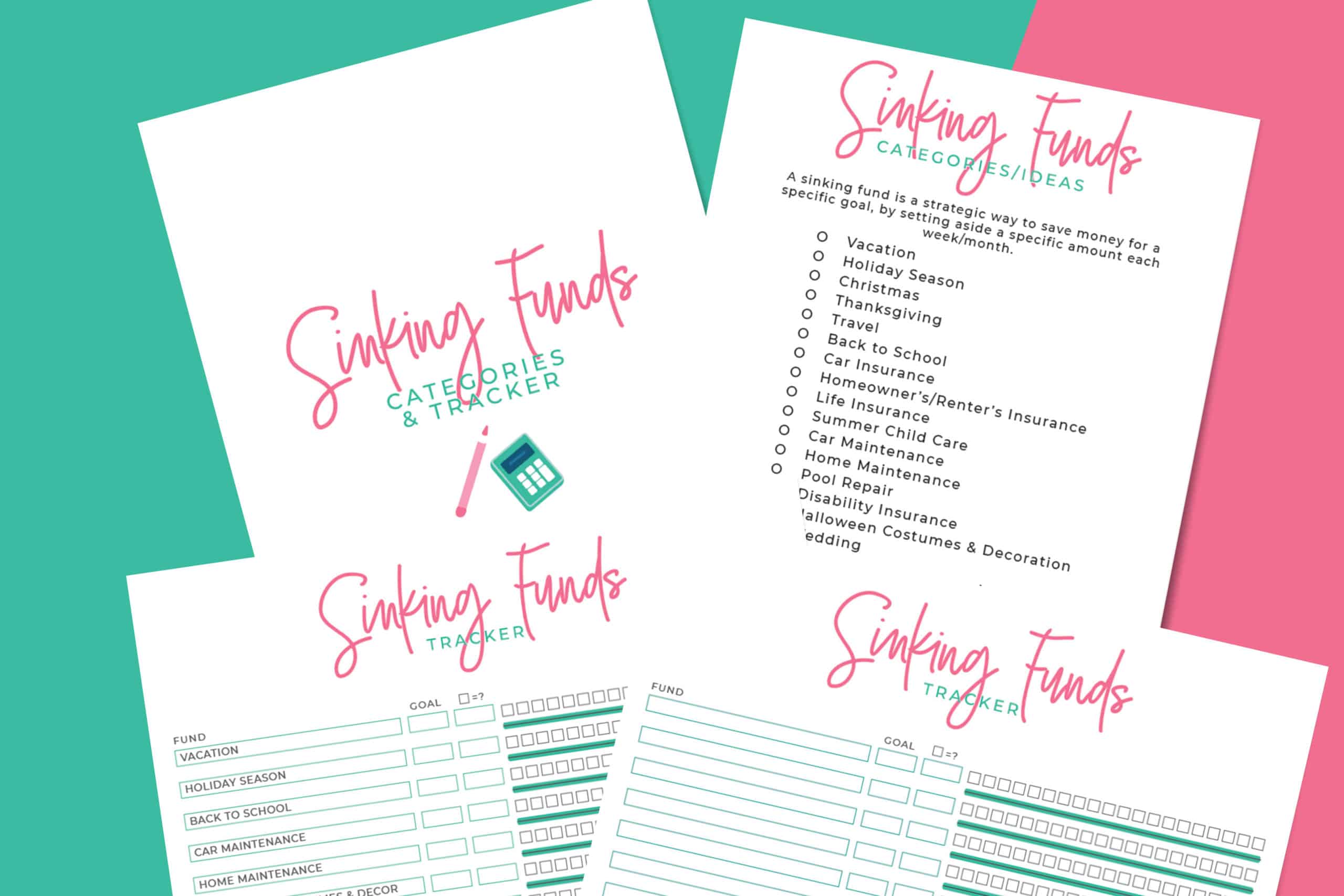Want to learn how to start a sinking fund? That is awesome news! Whether it is because you want to save up money for planned expenses such as a yearly vacation or treating yourself to a monthly massage, a sinking fund is a great way to manage and organize your finances.
On top of that, having a sinking fund or sinking funds allows you to avoid dipping into your savings or emergency fund.
Unlike your emergency fund which is solely for unforeseen circumstances such as a health crisis or dealing with the repercussions of a car accident, your sinking fund is reserved for things that are in the “want” category. For example, things that would be nice to have such as having a nice night out and going on a spa day.
Planning these expenses ahead of time gives you something to look forward to, as well as having the peace of mind from knowing exactly where you stand in your finances.
Ready to learn how to start your very first sinking fund? Dive in to this step-by-step guide on how to start a sinking fund, and grab the free printable below to get started!
What are sinking funds?
Contents

So, what exactly are sinking funds and what are they for?
Basically, sinking funds are pockets of money that you put aside for future expenses that you know are inevitable and happen infrequently but always seem to catch you off guard.
In order to avoid getting a “nasty surprise” such as your car insurance payment, a large electricity bill or having to pay for an unplanned dental visit, your sinking fund is basically your knight in shining armor!
Saving up money over time in a sinking fund allows you to have some money ready to deal with any situation that might arise. In fact, setting up sinking funds is actually a pretty smart money management skill that most do not have, as it requires some pre-planning as well as knowing all the things you actually do spend money on.
Related posts:
- 5 Steps To Achieve Financial Goals With Low Income
- 7 Valuable Money Management Lessons The Pandemic Taught Us
Sinking fund Categories

As everyone's spending habits and values are different, your sinking fund and mine will definitely look different! That is why this Sinking Funds Categories and Tracker printable gives you categories to choose from as a starting point.
Some common categories for sinking funds include:
- Car insurance
- Christmas gifts
- Summer child care
- Back to school expenses
- Home maintenance
- Vacation
- Halloween costumes and holiday outfits
- Doctor visits
- Dental check ups
So, don't worry if you have way more categories than your spouse or your best friend when it comes to your sinking fund. Choose the categories that make the most sense to you.
You might also like:
How to use your free sinking fund printable tracker
Now that you have your sinking fund categories, it is time to allot a goal amount for each category you have chosen. For example, if “Vacation” is your category, decide a goal amount you would like to save up. Next to the Vacation category, you should see plenty of boxes next to your goal.
For each box, start with a reasonable amount such as $10 or $50. Decide how many boxes you would need to tick in order to reach your goal.
Remember the goal here is to start small but being practical at the same time. Next, go through each category and write down your goal amount for them.
Once you have done the hard work, put your sinking fund tracker somewhere visible where you can see it everyday. Whether it is on your bathroom mirror, your home office wall or just on your bedroom door, seeing it everyday and ticking
As you start to put money down for your sinking fund, remember to tick each box every time you fulfill a box. Whether you tick it or color the box in, it is totally up to you.
As you reach the goal amount for each category, consider writing down a reward next to that category as something to look forward to. Whether it is enjoying a simple meal out, buying yourself a new top or just enjoying a girl's night out….the reward is also totally up to you.
Ready to start your sinking fund or funds now? I am super excited for you as you are building a positive money habit of planning ahead and avoiding nasty surprises!

